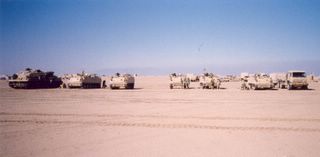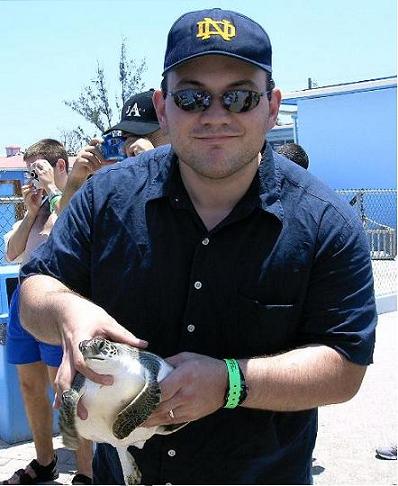So specifics of Operation Iraqi Freedom aside, what is a mechanized smoke platoon supposed to be used for? The following list of missions is taken from Army Field Manual 3-7 (paraphrased and chopped by me) describing smoke operations.
Applications of smoke include:
Obscuring
Screening
Protecting
Marking
Offense
Friendly forces use projected, generated, and self-defense smoke to:
Mark targets.
Obscure enemy gunners and surveillance.
Degrade enemy command, control, and communications.
Conceal passage of lines, movement to contact, and attacks.
Conceal landing zones, drop zones, or pickup zones.
Conceal river-crossing operations and reduction of obstacles.
Conceal logistics operations (for example, fast refuel sites).
Signal.
Support deception plans.
Degrade enemy laser designators, range finders, and weapons.
Enhance artillery-delivered minefields by concealing visual indicators.
Support Urban operations.
Defense
In the defense, forces use smoke primarily to increase survivability and counter enemy reconnaissance, surveillance, and target acquisition.
Use smoke in the defense to:
Obscure enemy direct-fire gunners and artillery forward observers.
Disrupt enemy movement and command and control.
Conceal obstacle emplacement, prep of positions, and movement.
Conceal reconstitution, holding, and staging areas.
Conceal Main Supply Route activities.
Signal.
Mark targets.
Deceive the enemy as to areas of main effort and battle positions.
Reduce the effectiveness of enemy directed-energy weapons.
Now these uses of smoke can generally be done with artillery or by individuals with smoke pots. The mechanized smoke platoon, however, can provide a significantly higher volume of smoke, covering larger areas for longer periods of time. The platoon is mobile allowing for easy adjustment of a large smoke screen by repositioning vehicles. This mobility also allows the platoon to provide obscurant on the move.
Smoke generators practice making obscurant fields Using the "Racetrack" and "Figure-8" techniques in Kuwait.
The M58 mechanized smoke platoon provides smoke with a baby oil like substance known as fog oil. This is accomplished without combustion (though the generator itself is power by diesel fuel). The M58 heats up the fog oil to 1500 degrees Fahrenheit. Smoke is evaporated from the fog oil and released out the back of the generator. In addition to this visual obscurant, the M58 can obscure the infared spectrum as well by adding graphite shavings into its smoke cloud. This is known as "black smoke" and requires the operators within the smoke to use their gas masks for health reasons.
A mechanized smoke platoon is also equipped with an .50 caliber machine gun on each vehicle. The M58 Smoke Generator is a light tracked vehicle (on the M113 chassis) and has moderate armor. These characteristics give the M58 smoke generator platoon more firepower and protection than any other chemical platoon. They have to be though because most often they travel in support of Armor and Mechanized Infantry units.
Vehicle mounted .50 caliber machine gun range, training to fire the weapon system mounted on top of the M58 smoke generator.
Some of my platoon in Kuwait in AA Hammer. On the far left is our M88 Recovery Vehicle. The 5 vehicles in the center are M58 smoke generators and on the far right is an our FMTV truck as part of our resupply squad. In addition to these vehicles, there were two more M58s and a HEMMT fuel truck filled with 2500 gallons of Fog Oil in my platoon.
skip to main |
skip to sidebar
Baseball; Football; Notre Dame; The war in Iraq; Family; Lost; Books, Games & Movies;

0 comments:
Post a Comment